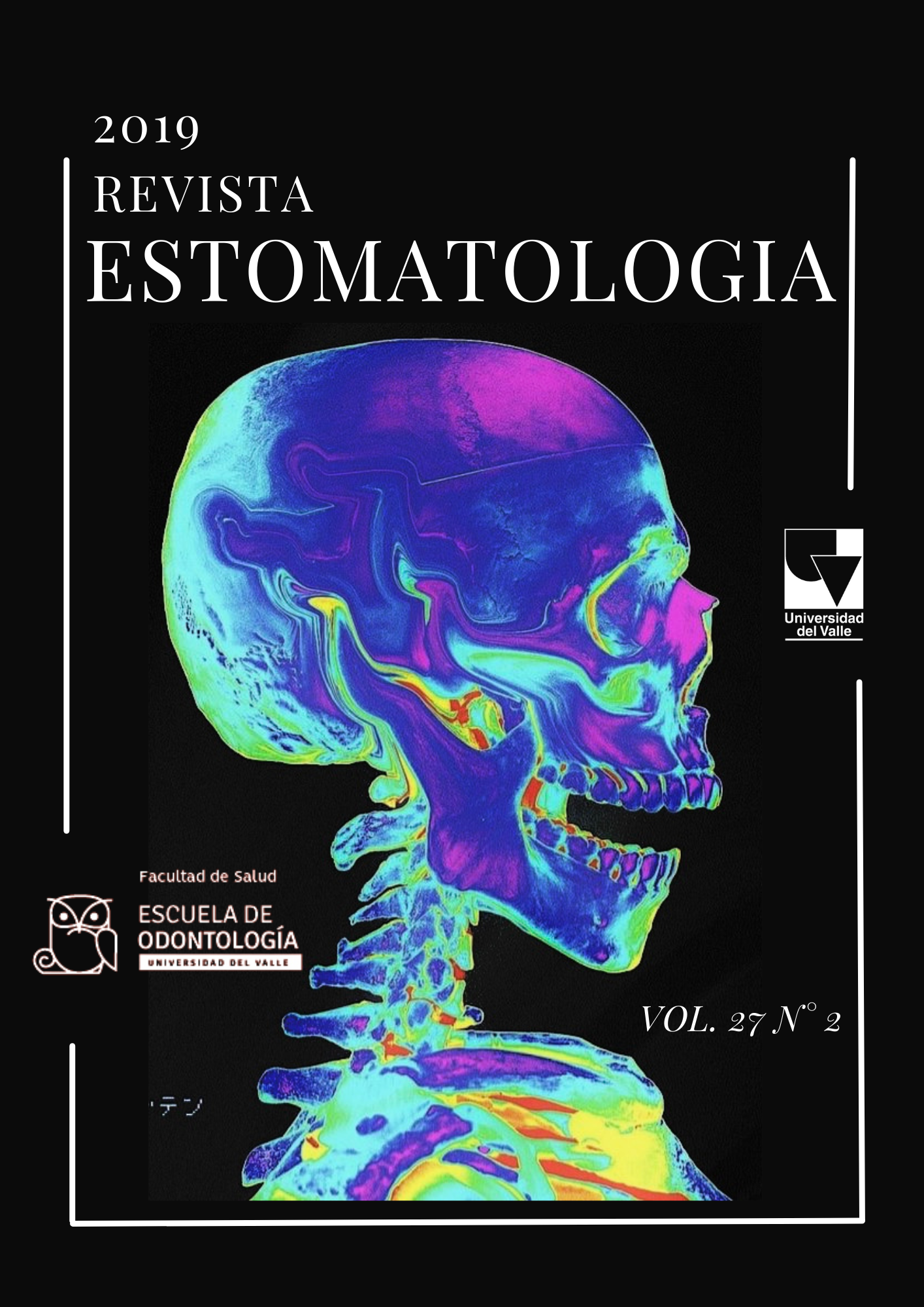Altering Vertical Dimension: A Literature Review
Keywords:
Dimensión vertical, Rehabilitación oral, Oclusión, desordenes temporomandibulares.Main Article Content
The alteration of the vertical dimension it’s been a controversial issue for more than 50 years, today is not known an exact protocol to determine what is the right vertical dimension for each person and the appropriate variation to which you can submit a patient without causing any type of joint, muscle, functional or aesthetic alteration.
In this review, we show the different concepts and criteria that must be taken into account in order to carry out successful treatments, whether in dentate, partially edentulous or totally edentulous patients to determine a vertical dimension that adapts to each patient through parameters such as facial aesthetics, health of the temporomandibular joint, occlusion and phonetics.
Driscoll CF, Freilich MA, Guckes AD, Knoernschild KL, Mcgarry TJ. The Glossary of Prosthodontic Terms. J Prosthet Dent. 2017;117(5):C1-e105.
Johansson A, Johansson AK, Omar R, Carlsson GE. Rehabilitation of the worn dentition. J Oral Rehabil. 2008;35(7):548–66.
Alhajj MN, Khalifa N, Abduo J, Amran AG, Ismail IA. Determination of occlusal vertical dimension for complete dentures patients: an updated review. J Oral Rehabil. 2017;44(11):896–907.
Abduo J, Lyons K. Clinical considerations for increasing occlusal vertical dimension: A review. Aust Dent J. 2012;57(1):2–10.
Rebibo M, Darmouni L, Jouvin J, Orthlieb JD. Vertical dimension of occlusion: the keys to decision. Int J Stomatol Occlusion Med. 2009;2(3):147–59.
Moreno-Hay I, Okeson JP. Does altering the occlusal vertical dimension produce temporomandibular disorders? A literature review. J Oral Rehabil. 2015;42(11):875–82.
Dawson PE. Vertical Dimension. In: Functional Occlusion: From TMJ to Smile Design. Mosby. 2007. p. 113–29.
Carlsson GE, Ingervall B, Kocak G. Effect of increasing vertical dimension on the masticatory system in subjects with natural teeth. J Prosthet Dent. 1979;41(3):284–9.
MONTEITH B. The role of the free‐way space in the generation of muscle pain among denture‐wearers. J Oral Rehabil. 1984;11(5):483–98.
Guguvcevski L, Gigovski N, Mijoska A, Zlatanovska K, Gigovska AA. Temporomandibular Disorders Treatment with Correction of Decreased Occlusal Vertical Dimension. Open Access Maced J Med Sci. 2017;5(7):983–6.
DAHL BL, KROGSTAD O. Long-term observations of an increased occlusal face height obtained by a combined orthodontic/prosthetic approach. J Oral Rehabil. 1985;12(2):173–6.
Abduo J. Safety of increasing vertical dimension of occlusion: a systematic review. Quintessence Int [Internet]. 2012;43(5):369–80. Available from: http://www.ncbi.nlm.nih.gov/pubmed/22536588
Igic M, Krunic N, Aleksov L, Kostic M, Igic A, Petrovic M, et al. Determination of vertical dimension of occlusion by using the phonetic vowel “O” and “E.” Vojnosanit Pregl Med Pharm J Serbia. 2015;72(2):123–31.
Lobbezoo F, Ahlberg J, Raphael KG, Wetselaar P, Glaros AG, Kato T, et al. International consensus on the assessment of bruxism: Report of a work in progress. J Oral Rehabil. 2018;45(11):837–44.
Levartovsky S, Pilo R, Shadur A, Matalon S, Winocur E. Complete rehabilitation of patients with bruxism by veneered and non-veneered zirconia restorations with an increased vertical dimension of occlusion: an observational case-series study. J Prosthodont Res. 2019;
Zanardi PR, Santos MS, Stegun RC, Sesma N, Costa B, Dalva Cruz Laganá. Restoration of the Occlusal Vertical Dimension With an Overlay Removable Partial Denture: A Clinical Report. J Prosthodont Complex Restorations. 2016;81–5.
Los autores/as conservan los derechos de autor y ceden a la revista el derecho de la primera publicación, con el trabajo registrado con la licencia de atribución de Creative Commons, que permite a terceros utilizar lo publicado siempre que mencionen la autoría del trabajo y a la primera publicación en esta revista.

